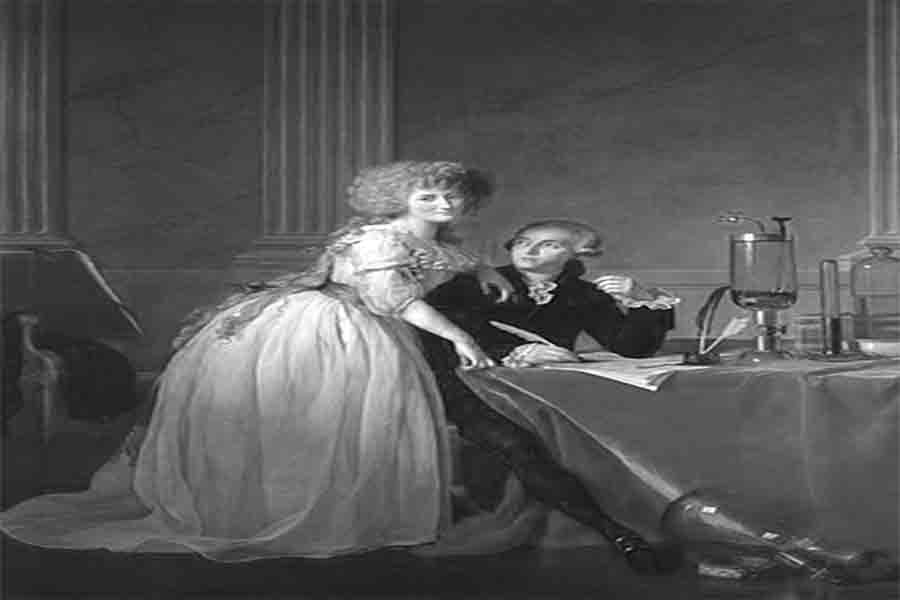Table of Contents
Introduction
Antoine Lavoisier, often referred to as the “Father of Chemistry,” revolutionized the field of chemistry with his meticulous methods and groundbreaking discoveries. Born on August 26, 1743, in Paris, France, Lavoisier’s contributions laid the foundation for modern chemical science. To understand how he became the father of chemistry, it’s essential to delve into his life, work, and the influences that shaped his journey.
Early Life and Family Background
Antoine Lavoisier was born into a well-to-do family. His father, Jean-Antoine Lavoisier, was a prominent lawyer at the Parlement of Paris, and his mother, Émilie Punctis, came from a wealthy family. Tragically, Lavoisier’s mother died when he was only five years old, but her inheritance provided him with financial security throughout his life.
Lavoisier’s early education was thorough. He attended the Collège des Quatre-Nations (Collège Mazarin) in Paris, where he excelled in the sciences, particularly chemistry. His family’s wealth allowed him access to the best education, and his father encouraged his academic pursuits, though he initially steered Antoine towards a legal career.
Academic and Professional Pursuits
Despite his father’s wishes, Lavoisier’s passion for science persisted. He completed his law degree in 1764 but simultaneously continued his scientific studies. His early work in geology and mineralogy earned him recognition, leading to his election to the prestigious French Academy of Sciences in 1768 at the young age of 25.
His involvement in various public works marked Lavoisier’s early professional life. He was appointed to a government commission to investigate and improve street lighting in Paris. This project showcased his scientific rigor and innovative thinking, qualities that would define his later work in chemistry.
Antoine Lavoisier’s Achievements
- Law of Conservation of Mass: One of Antoine Lavoisier’s most significant contributions was the formulation of the Law of Conservation of Mass. This principle states that in a chemical reaction, matter is neither created nor destroyed. Lavoisier demonstrated this through meticulous experiments, carefully measuring the mass of reactants and products. His work dispelled the prevailing phlogiston theory, which postulated that a fire-like element called phlogiston was released during combustion. By proving that combustion involved the combination of substances with oxygen, Lavoisier paved the way for modern chemical reactions’ understanding.
- The Naming of Elements and Compounds: Lavoisier’s influence extended to the nomenclature of chemistry. Along with colleagues like Louis-Bernard Guyton de Morveau, Claude Louis Berthollet, and Antoine François de Fourcroy, he developed a systematic method for naming chemical substances. This new system, outlined in the seminal work “Méthode de nomenclature chimique” (Method of Chemical Nomenclature), published in 1787, replaced obscure and often inconsistent names with ones that described the compounds’ composition. This nomenclature is still in use today, providing a universal language for chemists worldwide.
- Discovery of Oxygen’s Role in Combustion and Respiration: Perhaps Lavoisier’s most famous achievement was identifying oxygen’s crucial role in combustion and respiration. He conducted experiments showing that when substances burn, they combine with oxygen from the air, a process he termed “oxidation.” This discovery was pivotal in understanding how organisms breathe and metabolize food, linking chemistry with biology and laying the groundwork for biochemistry.
- Introduction of Quantitative Methods: Antoine Lavoisier championed the use of quantitative methods in chemical research. He emphasized precise measurement and data analysis, which were revolutionary at the time. His approach transformed chemistry from a qualitative and often speculative field into a rigorous and systematic science. This emphasis on quantification underpins modern scientific methodology, extending beyond chemistry to all empirical sciences.
- Reform of Chemical Nomenclature and Classification: In addition to creating a systematic naming system, Lavoisier proposed a new classification of chemical substances. He categorized elements based on their properties and reactions, distinguishing between acids, bases, and salts. This classification helped clarify the relationships between different substances and facilitated further discoveries.
Lavoisier’s Role in the French Revolution
Lavoisier’s contributions extended beyond the laboratory. He was an active participant in the intellectual and political life of his time, serving as a member of the French Academy of Sciences and working on various government commissions. His work in public administration included improving the efficiency of gunpowder production for the French military and reforming the nation’s tax system.
Revolutionary Contributions to Chemistry
Antoine Lavoisier’s contributions to chemistry are monumental. His work in the late 18th century laid the groundwork for modern chemical nomenclature, the law of conservation of mass, and the understanding of combustion, respiration, and photosynthesis.
- Law of Conservation of Mass: One of Antoine Lavoisier’s most significant contributions is the law of conservation of mass, which states that matter is neither created nor destroyed in a chemical reaction. This principle was groundbreaking at the time and provided a solid foundation for future chemical studies.
- Combustion Theory: Lavoisier debunked the long-standing phlogiston theory, which posited that a fire-like element called phlogiston was released during combustion. Through careful experimentation, Lavoisier demonstrated that combustion involves the combination of a substance with oxygen, a concept that fundamentally changed the understanding of chemical reactions.
- Chemical Nomenclature: Antoine Lavoisier, along with colleagues like Louis-Bernard Guyton de Morveau, Claude-Louis Berthollet, and Antoine François de Fourcroy, developed a systematic chemical nomenclature. This new naming system brought clarity and consistency to the field, allowing chemists to communicate more effectively.
- Elements and Compounds: Lavoisier identified and named oxygen and hydrogen, establishing the basis for the identification of elements and compounds. He defined elements as substances that could not be broken down into simpler substances by chemical means.
Personal Life and Marriage

In 1771, Antoine Lavoisier married Marie-Anne Pierrette Paulze, who played a crucial role in his scientific work. Marie-Anne was only 13 years old at the time of their marriage, but she quickly became an indispensable collaborator. She learned English to translate scientific works, created detailed illustrations of Lavoisier’s experiments, and hosted salons that facilitated discussions among prominent scientists.
Challenges and Controversies
Despite his achievements, Antoine Lavoisier’s career was not without challenges. As a member of the Ferme Générale, a private tax collection company, Lavoisier was involved in a highly unpopular system that led to significant public resentment. His role as a tax collector overshadowed his scientific contributions in the eyes of many contemporaries, and during the French Revolution, this association with the Ancien Régime proved to be perilous.
Tragic End and Legacy
Antoine Lavoisier’s life came to a tragic end during the Reign of Terror. In 1794, amidst the revolutionary fervor, he was arrested and charged with crimes related to his role in the Ferme Générale. Despite appeals from prominent figures in the scientific community, Lavoisier was convicted and executed by guillotine on May 8, 1794.
His death was a significant loss to the scientific world, but Lavoisier’s legacy endured. His meticulous approach to experimentation, insistence on precise measurements, and development of a systematic chemical language transformed chemistry from a qualitative to a quantitative science.
Conclusion
Antoine Lavoisier’s journey to becoming the father of modern chemistry was shaped by his early education, family background, and relentless pursuit of scientific understanding. His revolutionary discoveries and the methodologies he established continue to influence the field of chemistry today. Antoine Lavoisier’s story is not just one of scientific triumph but also a testament to the profound impact that meticulous research, collaboration, and a passion for discovery can have on human knowledge. His legacy reminds us that the pursuit of science can transcend personal and political tumult, leaving an indelible mark on the world. Learn more
know about Emil Erlenmeyer

